It is fair to say that during the early years of automotive design, manufacturers didn’t place much emphasis on aerodynamic efficiency. Until the 1930s, most cars featured the aero efficiency of your average barn…traveling sideways. However, Chrysler attempted to buck the trend at that time with its Airflow model wearing both the Chrysler and DeSoto badges. To say the public’s reception was lukewarm would be an understatement, with the company canceling the program after three years. This 1935 DeSoto Airflow is a gem. Its presentation is hard to fault, and it runs and drives well. It needs a new home, with the seller listing it here on Facebook in Priest River, Idaho. They set their price at $29,850, and I must say a big thank you to Barn Finder T.J. for spotting this rare classic.
Chrysler’s aim with the Airflow project was to maximize vehicle efficiency. Although there was nothing radical about the drivetrain configuration, its styling caught the buying public’s attention. The flowing lines, faired-in headlamps, and the angled split windshield were some of the character traits that potential buyers couldn’t help but notice. It polarized opinion, with some readily accepting it and others rejecting it outright. The seller indicates this Airflow is original, suggesting it is an unrestored survivor. If the odometer reading is verifiable, the presentation and condition could make that claim plausible. Its Viennese Blue paint holds an impressive shine, with no signs of significant flaws or prior accident repairs. My instincts tell me that any car with nearly nine decades behind it that looks this good must have received a previous restoration, but it would require an in-person inspection to confirm it. The panels are laser-straight, and there’s no evidence of rust. The exterior looks clean, and the underside is spotless. The sparkling chrome helps provide a striking contrast to the dark paint, and there are no visible glass issues.
Ordering a 1935 DeSoto Airflow meant receiving a car powered by a 241.5ci flathead six-cylinder engine that sent 100hp and 250 ft/lbs of torque to the rear wheels via a three-speed manual transmission. The original owner went one step further by ordering this car with the optional Overdrive. Although the company never published performance figures, journalists had no trouble winding the Airflow to 80mph. However, they stated that the vehicle felt more comfortable at around 60mph – 65mph, and that figure gels with what the seller says. This classic is in excellent mechanical health and is a turnkey proposition. It runs and drives perfectly, and they describe it as a “super low mileage” example. The odometer shows 7,700 miles, but there is no mention of whether the seller holds evidence confirming those miles as genuine. That is a question worth asking because if the odometer reading is verified, that makes this an exceptional survivor.
One area where this car sparkles is its interior. It features painted steel and plenty of chrome Art Deco touches on the dash. That aspect looks perfect, while the cloth upholstered surfaces show no significant wear or problems. The headliner is spotless, and the only fault I can identify is the top of the driver’s armrest is quite dirty. I’m unsure whether it would respond to a deep clean, but I would choose that option before considering recovering or replacement. The interior isn’t brimming with optional extras, although the factory heater and under-dash tissue box would be welcome.
Automotive history is littered with nearly as many failures as successes, and the DeSoto Airflow fits into the first category. The buying public wasn’t ready for the radical styling, and they stayed away in their droves. There were also persistent rumors about the safety of the revolutionary body, despite the company repeatedly proving that it was at least a match, and usually stronger, than the competition. Total DeSoto Airflow sales for 1935 were 6,797, which was well below expectations. Chrysler axed the DeSoto Airflow at the end of 1936, replacing it with a car featuring a more conventional appearance. It is unclear how many survive today, but some sources set a figure of under one hundred examples of the four-door sedan. If you love all things Mopar, would you consider adding it to your collection?
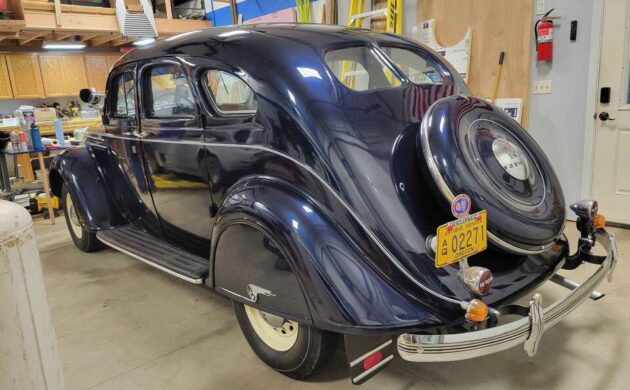
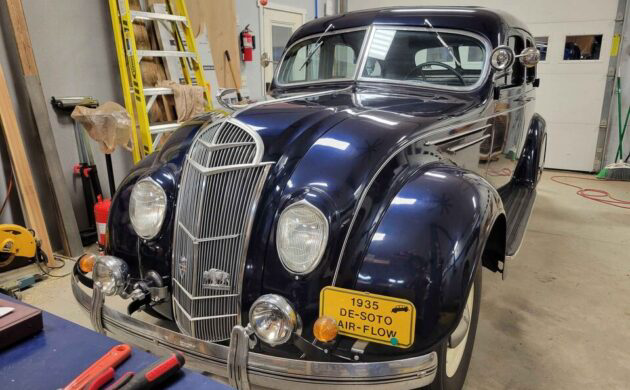
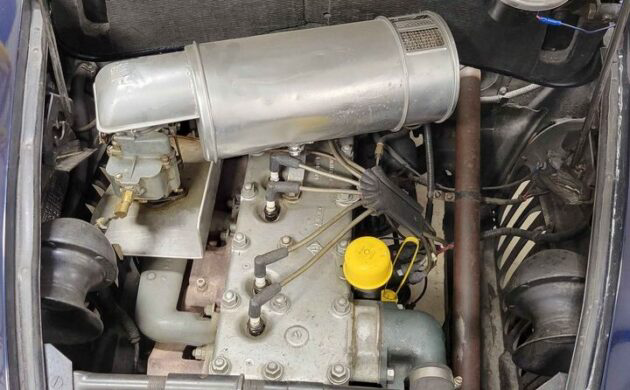
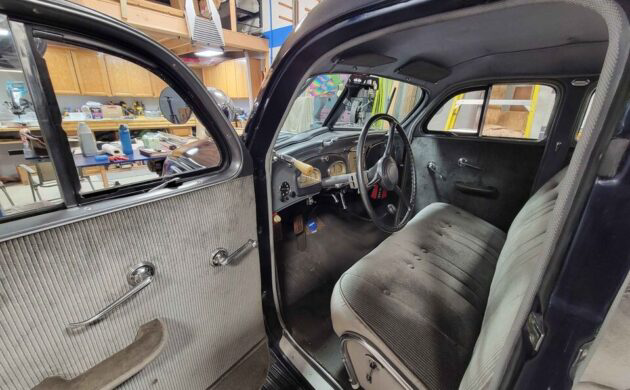
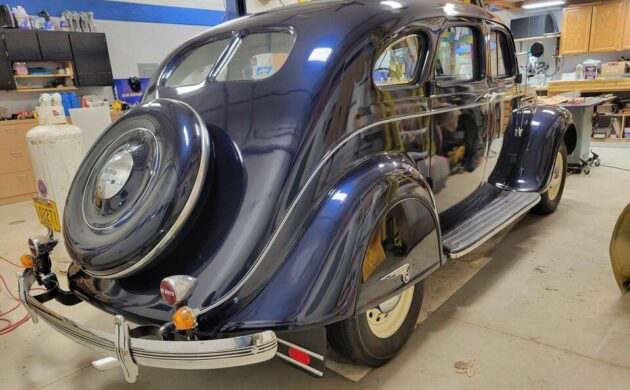

Gorgeous car. It’s obvious from the underbody photos in the original post that this car doesn’t see much road time. I think the asking price is reasonable, and even though I don’t “love all things Mopar,” this is a car I would love to own.
Far more evidence that this is a restored car than factory original. Certainly not a barn find. Nothing wrong with a well restored car with safety updates like this one.
The time of Art Deco; the design of the Chrysler and Eastern Colombia Buildings, The Top of the Mark (Mark Hopkins Hotel), Boeing 314 Pan American Clippers, ALCO streamlined 100++MPH steam engines, and beauties like this Desoto Airflow or the Talbot-Lago Teardrop. A time of class and panache, when though many people struggled just to put a little food on the table they still could dream of meeting-or becoming!-Babe Ruth or Joe DiMaggio and traveling in style..
This is a perfect automotive icon of the time when imaginative engineers and designers dared to buck the trend and created a timeless trend of their own.
Well said!
These cars were too well built and the design just didn’t sell. Anyway here is the Chrysler Airflow they were tanks! https://youtu.be/bFl5pEe-7uo
Wish I could quote a source but I’ve read that the build quality on the airflows wasn’t the best. That and the innovative design hurt them. They were strong though. Plenty of film of them being rolled and the cabin holding up
Cool film clip-thanks, Cadmanis!
what a great video for 1934. Thanks for listing this. I still would not by this 1935 DeSoto, however it is a good looking car.
I’m never sure whether I like Airflows or not. A great idea, but if I were selling something on aerodynamics I’d’ve had the spare wheel inside the body and the tail-lights faired-in, for example. It’s a nice-looking example, though.
I think I’d choose a Tatra instead, if I were in a ’30s aero market..
I always liked the looks of these, but I had an AMC Pacer once and thought that was cool. This one looks like a really nice car, even if its been partly restored it looks fantastic. And the price for one in this shape is realistic, you couldn’t restore one for that. I gotta ask though did these have trunk?
You are correct on both counts geezerglide85, As to the Pace, it was the most inspired American Car of the ’70s. (not that that’s saying much) The original Pacer was a masterpiece before the hashed-up grilles faux wood and wagons entered the scene.
In 1935, I would have ordered a Plymouth. Much more attractive at a small fraction of the price. The lack of aerodynamics could easily been made up for by the massive savings in price. The 201 was a great little engine. After the war, many vehicles were left in England with them in, and many of us Anglican lads got to hear them run. (at least when we were in the countryside. Driving was a privilege the poor of London were not allowed)
Great looking car. Nice to see one so well preserved!!!Looking at the condition of this one the way it presents so nice ould make the price worth it.
The greatest features of the Airflows were in the mechanical advances. Some feature were 20 years ahead of their time. At the time when cars were still sheet metal panels over a wood frame, the Airflow had a solid metal body. The engine was moved forward over the front axel for much better drivability. It drives like a modern car. A friend drives his complete stock Airglow all over the country in freeway traffic. We had a restored chassis at the museum next to a Model A chassis and the differences were many and impressive.
In addition, the rear passenger’s seat was moved forward of the rear axle rather than having them sit on top of it. This improved ride comfort for those in the rear.
Nevadahalfrack, You absolutely nailed it, what I wanted to say. This car represents an era in Automotive History and Styling. Sorry, it has nothing to do with Love of all things Mo Par. I always like everyone else, I thought they were terrible. Goes to show how much I know. This is an icon to Automotive design and history and in excellent condition, It belongs in a Museum.
At the same time Ford was moving toward a more “streamlined” design, each year from 1936 on made incremental progress, given their volume Ford could afford new stampings each year, Lincoln Zeypher, in 1937, debuted their streamlined design which was liked, although as radical a departure from the previous models as this one, and with one facelift in 1942 produced it through 1948. The Ford/Lincoln underneath, however, was antiquted.
Yes, it is a beautiful car. I grew up with ‘30s flat-head Mopars. Due to the lack of new cars due to WW II in the ‘40s. For those middle-class families unable to afford a new car (if they could even find one) the inventory of used cars available included a lot of ‘30s examples. My dad’s first car after the War was a ’36 DeSoto, followed by a ’37 DeSoto that we had up until 1950. I suspect ‘30s cars saw unusually long service lives for that reason. A family of a friend with whom I grew up drove Airflows for many years.
An exam of the more extensive pictures in the Facebook ad reveals that this car has definitely been restored. Enclosed cars built by Chrysler from the mid-30s up through the early ‘50s always had faux-wood-painted dashboards. The flat grey paint on this dash has been beautifully done, but it is not correct. Same for the window frames.
how do you get 250 lbs of torque out of 100 hp?..
I would be soooo tempted to put the original frame and drivetrain in storage for future use to reverse the process if required and drop a modern frame and drivetain under this and just drive the hell out it. This thing was designed to go fast.
Let me guess, drop an LS into it? Ha Ha Ha! Please